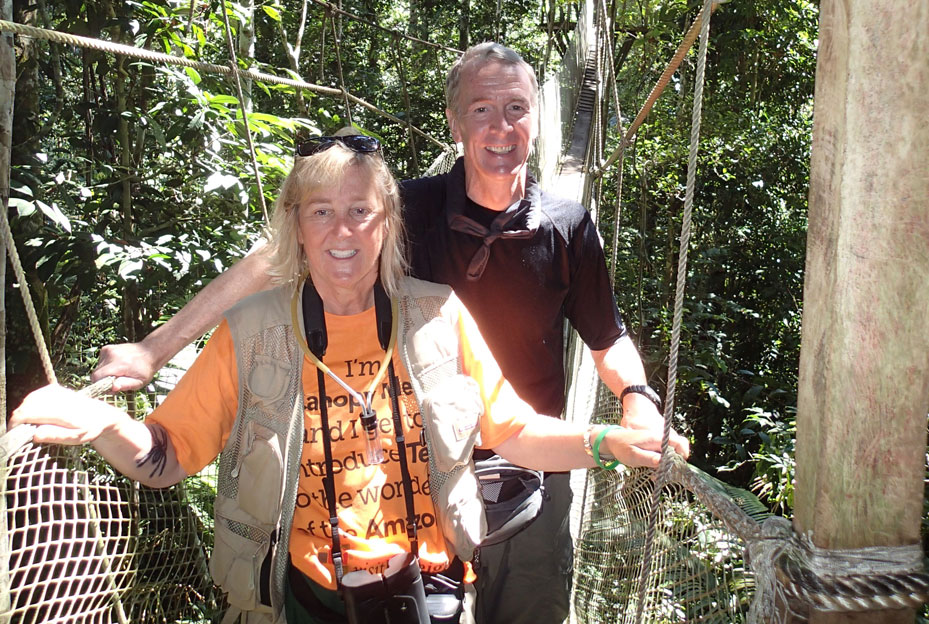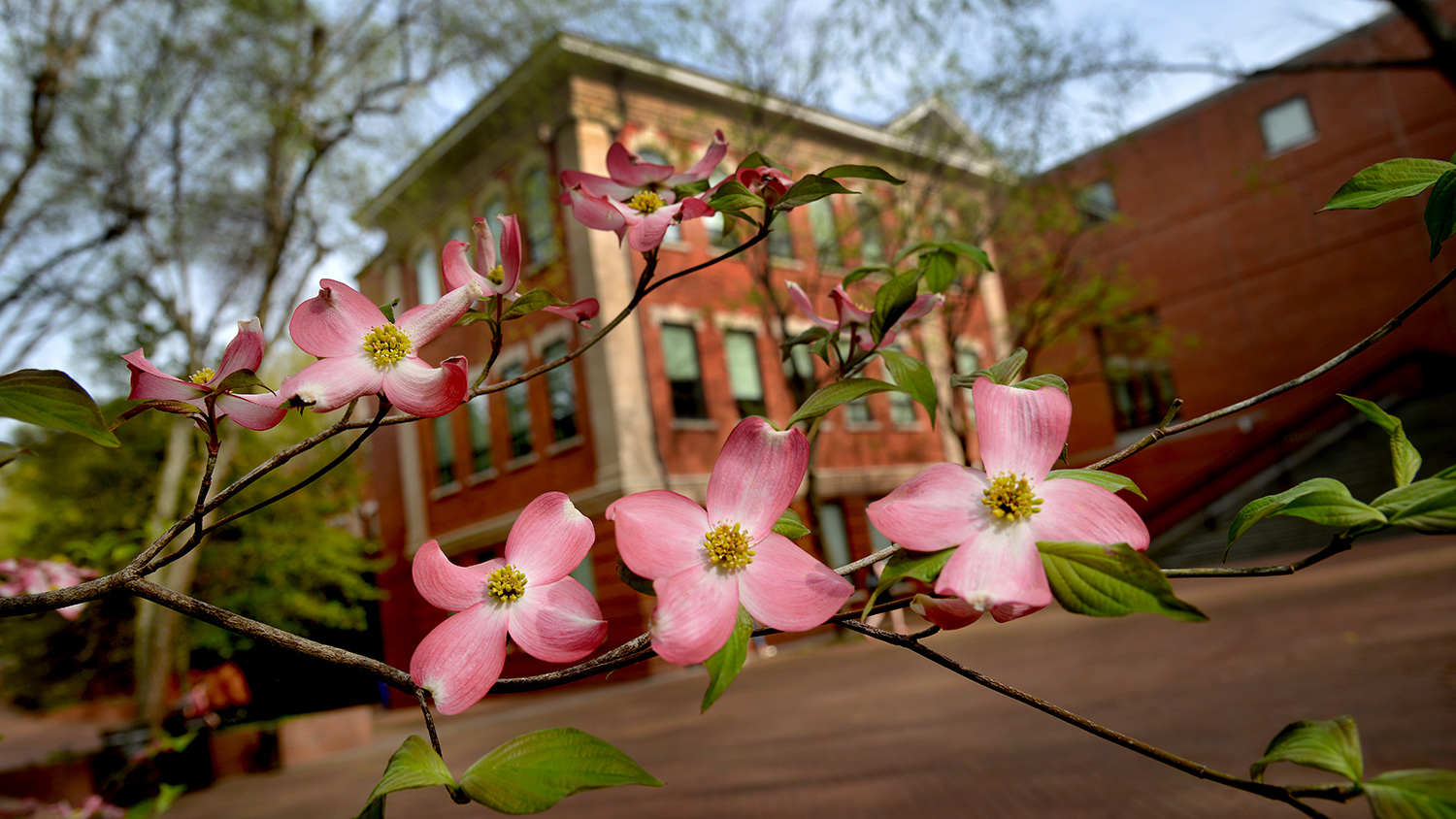Citizen Science in the Amazonian Rain Forest


CHASS Dean Jeff Braden shares his thoughts about a recent trip to the Amazon rain forest, where he served as a citizen scientist with Meg Lowman, Director of the NC Museum of Natural Sciences Nature Research Center.
I had the privilege recently of accompanying Meg Lowman, Director of the NC Museum of Natural Sciences Nature Research Center, on a trip to the Amazon rain forest for citizen scientists. The experience was meaningful in many ways, not least of which was participating in gathering data for Dr. Lowman’s research on leaf survival and devastation in the rain forest canopy. But I found myself especially struck with the starkly distinct ways in which the humanities and the sciences view this environmental marvel.
The biodiversity of the Amazon is overwhelming. Life was teeming everywhere I looked: plants large, small, and varied; exotic animals; unusual birds; and more enormous insects than I have ever encountered.
As the sun set over the lush sea of vegetation stretching below the canopy walkway, a gentle breeze and occasional calls of black-headed parrots, yellow-tailed caracaras, and toucans suggested an ageless organic tranquility, the kind described by nature romantics from Rousseau to Muir. Immersed in this lush setting without the intrusion of modern technologies—including those associated with hygiene and communication—I was able to be mindful of my environment, to rediscover nature’s balance and to awaken within the spirit of communing with the wilderness.
It’s difficult, then, to imagine what Darwin saw when he encountered a similar scene: A Malthusian battle of the survival of the fittest, where all species are in constant competition for the limited resources of the rain forest. Indeed, Darwin rejected the prevailing sentiment of his time that nature is a pristine utopia, the embodiment of nature’s beneficence, and replaced it with a vision of constant struggle, where species fight to displace others—or die.
And although the rain forest appeared to provide unlimited resources—I couldn’t look in any direction without seeing a multitude of lush vegetation, insects, arachnids, snakes, millipedes, birds, and towering trees—a quick look at the ground suggested otherwise. The slack grey clay that sucked at our shoes as we hiked to our most remote location is thin gruel for the mighty trees that towered over us.
A trek with Canopy Meg through the upper walkways of the forest showed that much of the rain forest nutrients are up in the trees, where bromeliads and other opportunistic species use their access to water and sunlight to create life, sometimes taking decades to send roots downward hundreds of feet before they touch the ground. All of these plants fight for water, nutrients, and light—and all of the animal species fight each other for the energy stored in those plants (or each other).
So, are the humanities right? Is the rain forest a lush, pristine paradise largely unspoiled (but now threatened) by the corrupting influence of humans? Or do the sciences win the day? Is the rain forest a battleground marked by those red of tooth and long of claw, a thunder dome where species fight other species—and each other—to the death? The correct answer is, of course, “Yes.” They are both right. Although the rolling green canopy stretching to the horizon, the soft breeze, and the setting sun offer an idyllic vista worthy of lyrical prose, it is truly a jungle out there. Embracing both visions deepens our understanding of, and appreciation for, the miracle that is the Amazonian rain forest.
By Jeff Braden, Dean, NC State University College of Humanities and Social Sciences


